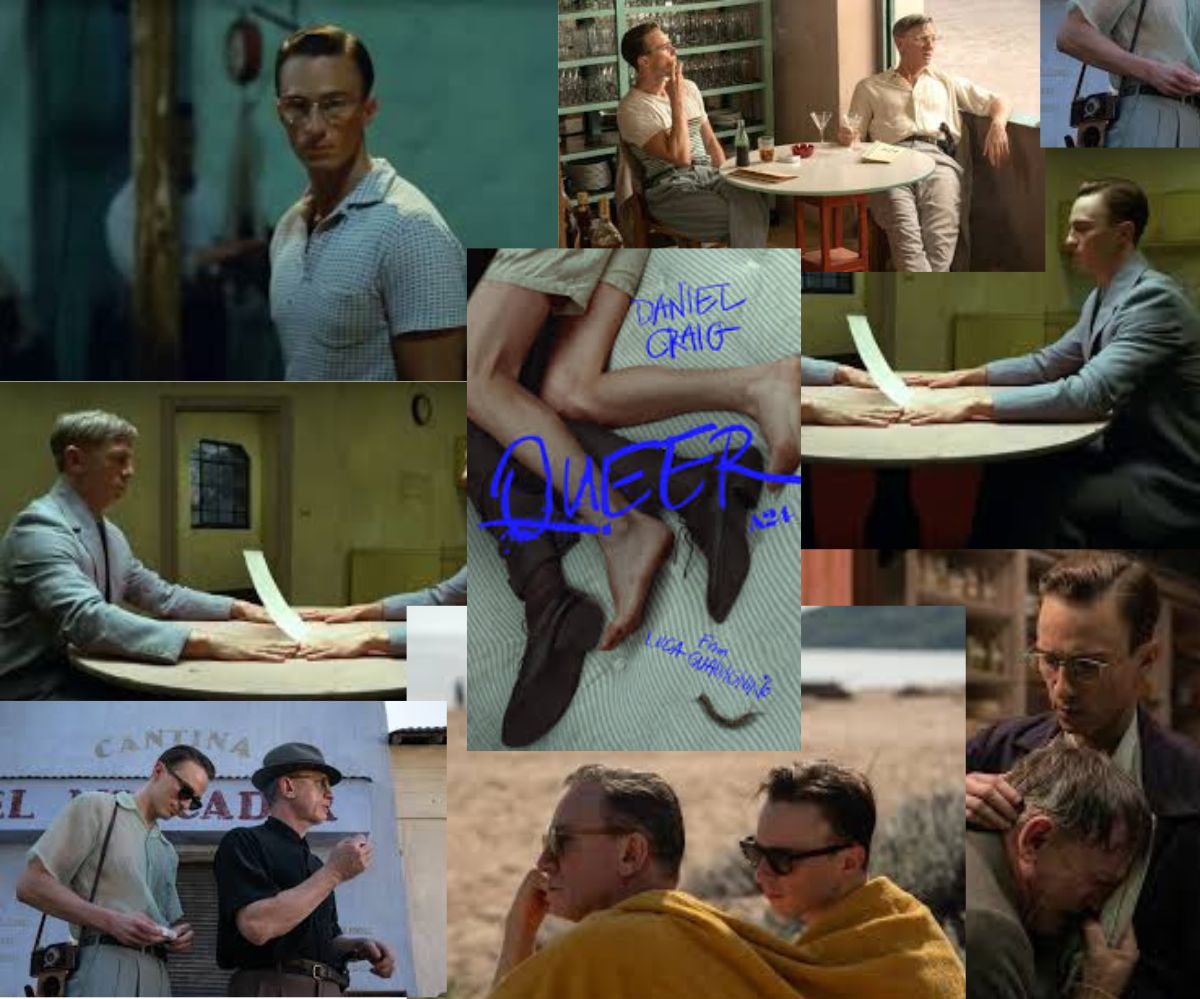Score: 4.5/5
Luca Guadagnino’s Queer is a soulful, heart-throbbing adaptation of the William S. Burroughs’ novella of the same name.
As his second film of 2024 following the sleek triumph of Challengers, Queer feels like a return to form for Guadagnino. Like all his films, it is overflowing with sensuality and tenderness. It’s hard to find another director working today with such a singular knowledge of how to coordinate and film intimacy and the human body. Guadagnino places great emphasis on the way bodies move and reacts to various stimuli, the way they intertwine and melt into each other, or how an exhale is shared during the union of two bodies, as if souls have been touched.
This desire to depict organic sensuality is a ubiqitous trait across Guadagnino’s filmography, from the soft swoon of Call Me by Your Name to the electrifying, erotically charged Challengers. Queer is Guadagnino at his most experimental and metaphorical, orchestrating desire in an equal parts raw and abstractly disembodied fashion.
The film’s first act has a unique mood. The slightly oversaturated, slightly fantastical portrait of Mexico City in the 1950s feels like a dream. The city teems with life day and night, the epicentre of its inhabitants’ joys and heartbreaks. We’re introduced to William Lee (Daniel Craig), an expatriate from the United States who spends his days and nights drinking, doing drugs and hooking up with any beautiful men he can seduce for the night.
His self-gratifying, numbing rituals are thwarted after his first encounter with the younger Eugene Allerton (Drew Starkey), a fellow expatriate and the new source of Lee’s infatuation, though this time his affection manifests differently.
Lee develops an all-consuming yearning for Allerton: a glimmer of genuine connection in a state of mind where sharing a bed is more akin to scratching an itch than it is the act of romantic consummation. Being close is never enough. Lee’s own flesh becomes a barrier between him and Allerton, leaving him with no greater desire than to tear open his chest and invite him into his heart and under his skin.
Craig delivers a masterful performance as Lee, revealing a side to his acting range hardly seen before. He depicts Lee in all his forms, from a flamboyant diva-like seducer to a man quivering from his own desire.
Queer is a love story as much as it is a story about queerness. Queer people can understand the struggle and helplessness of not being able to be loved the way they do another, but the core idea of “queer” in this film has nothing to do with any modern understanding of the term regarding identity.
Here, queerness is the distance between two bodies; it is any obstacle that prevents the flourishing of love in unison. In an interview with Vanity Fair, Guadagnino describes Queer as not a tale of unrequited love, but of unsynchronized love. Queer seems to say, no matter how far you journey or how deep you delve — even to the heart of the rainforest to take ayahuasca — love that is not meant to be simply will not flourish.
Guadagnino expresses total control over the intimacy in the film all the way to the devastating climax, knowing just when to introduce it to scenes. Lee’s yearning for Allerton is suffocating, becoming a drug he cannot be away from. The strength of his heartache bleeds into the audience; every touch, glance and caress with Allerton is a relief of tension. Even scenes where Lee is only imagining these actions evoke a swoon and desire for more. Guadagnino explores the intimacy of Lee and Allerton in all its quiet stillness and overt excitement, evoking a rawness of desire that feels natural for his characters.
There is immense heartbreak explored throughout the film, but Guadagnino leaves audiences with a hopeful, bittersweet reminder: although there is always the chance that the love we seek does not go our way, it is better to open our hearts and try than to deprive ourselves of connection.
This sentiment can sting following the film’s rather bleak conclusion, but it is nonetheless a stark reminder that it truly is better to have loved and lost than to have never loved at all. A cold, empty existence awaits those who adopt the latter style of living.

